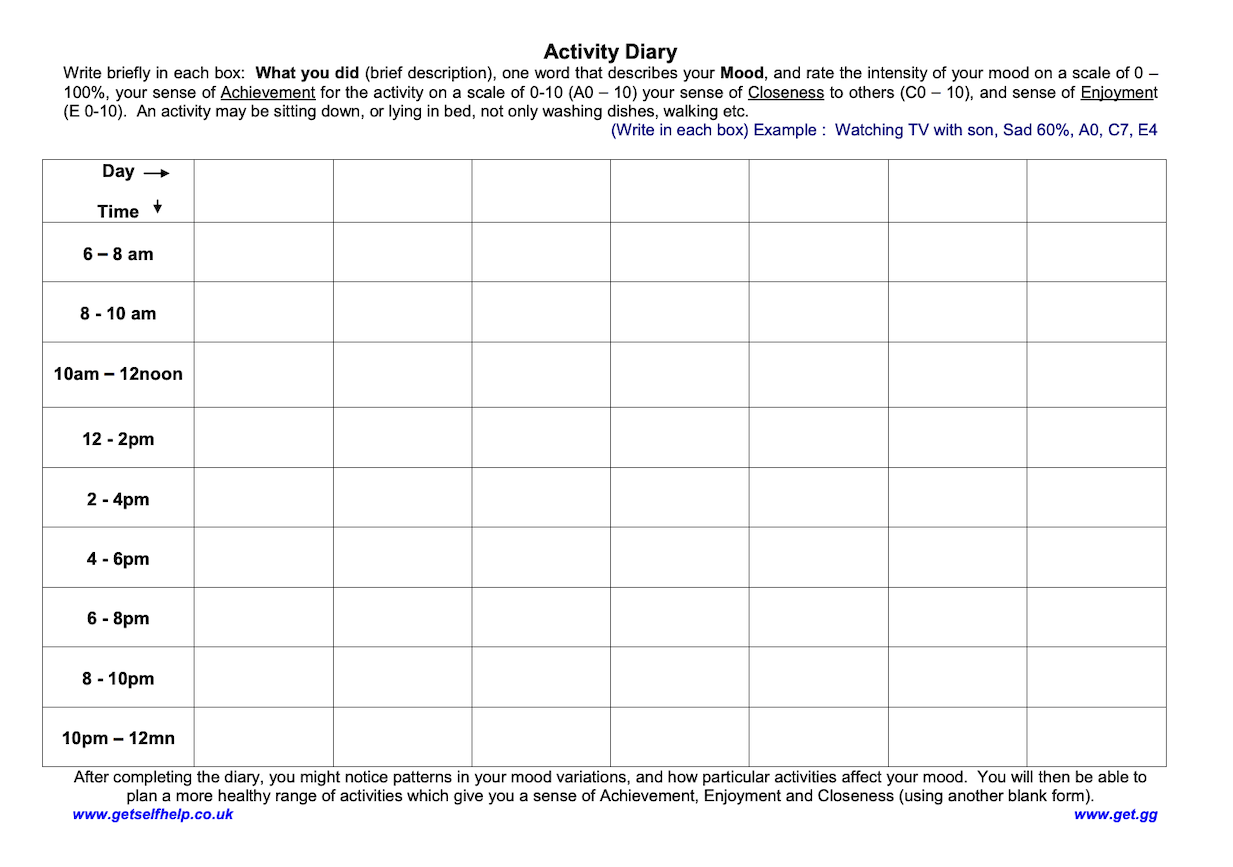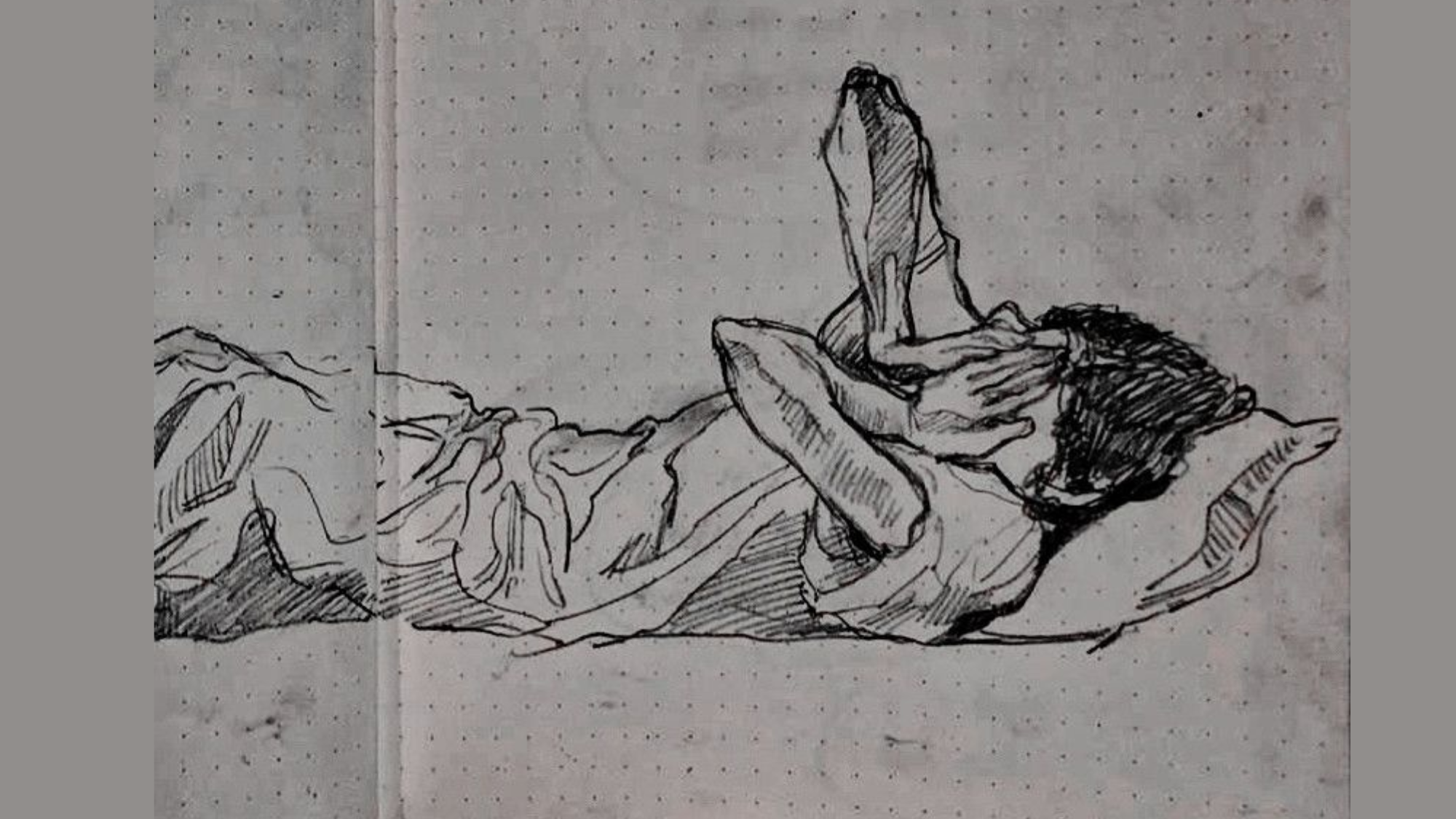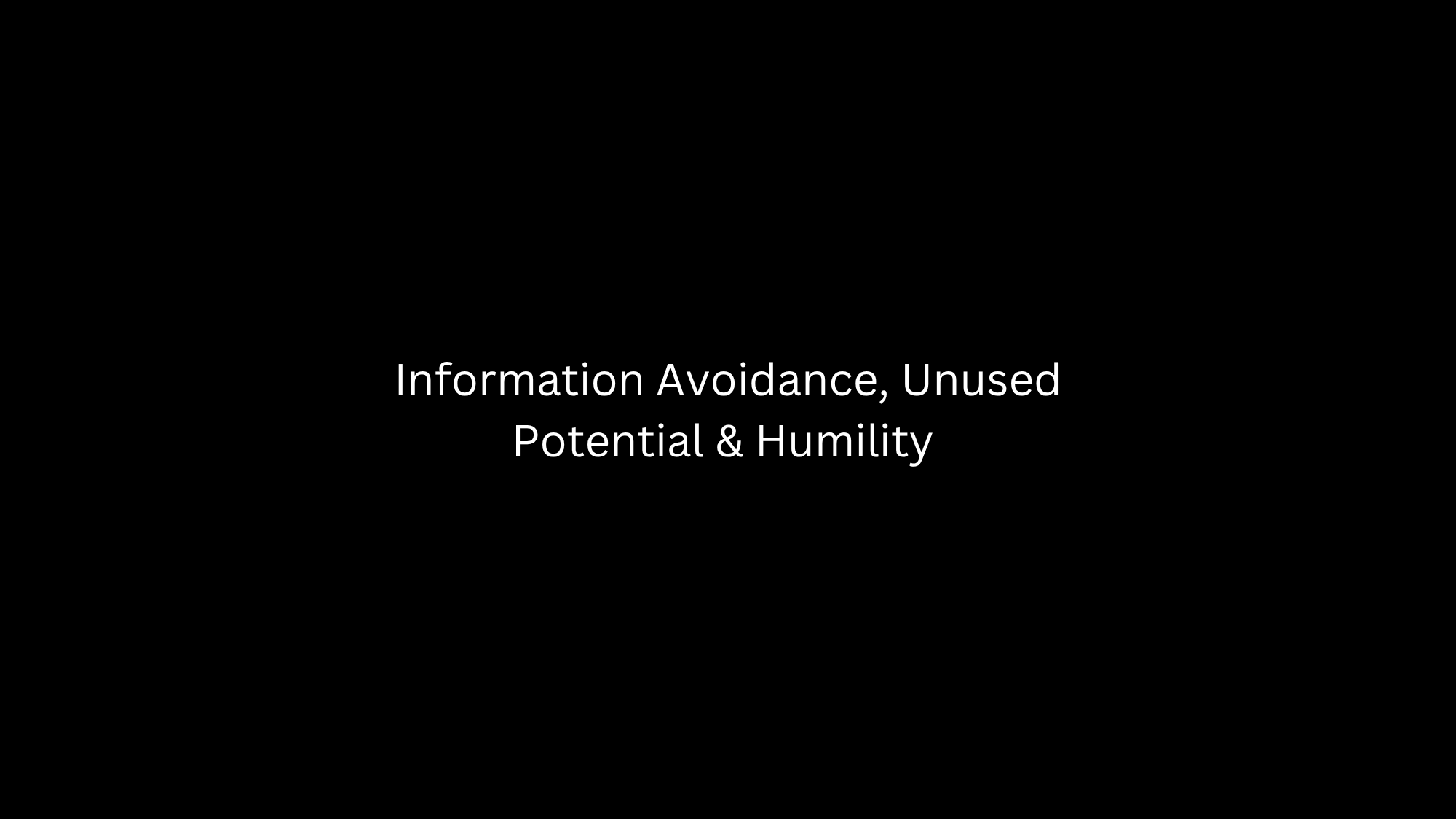

How to engage with life when you feel down (8 mins read)
The past two weeks have been tough.
And not because I've lost a leg, had diarrhea or been tricked into the back of a van by the pied piper.
No. It's just that... argh. I've just felt... off.
I've had no motivation to do anything which for some reason has given my brain permission to criticise myself for all the things I'm not doing.
Thanks brain, luv u.
But today, precisely at 3:47pm UK time, my mind arose from the darkness like a new born fawn (baby deer) galloping across a stunningly fresh British field first thing in the morning.
And no, not because I checked the fridge and realised I had enough coconut milk left for another bowl of chocolate weetabix minis although that did make my brain squirt dopamine, but because I read a super article by the psychologist Lucy Foulkes from the university of London.
Titled; how to engage with life when you're feeling down.
So whether you're feeling down right now and find yourself withdrawing from life, or you'd like to prepare for the next time the low feelies come, here's what I learned...
What is depression?:
- Depression is largely a consequence of low mood and inactivity.
- Which creates a vicious cycle; you feel low, so you don't do your usual things (workout, eat well, see other people), which makes you feel lower and want to do those things less.
- But the less you do those things, the less exposure you have to things that could make you feel better or potentially distract you from low feelies.
What causes low mood/depression?:
- There are many causes.
- But one in particular is something psychologists call "a big context shift".
- Essentially this means something has happened to you or is happening to you that's thrown you off balance.
- For example; after a relationship ends you might not want to go to the places you and your ex used to visit (causing you to withdraw from leaving the house).
- Or a student under pressure might not want to do their hobbies which bring them joy (causing him to do those hobbies less which makes him feel worse and more stressed).
Ok great, so what's the risk of withdrawing when you feel low?:
- As mentioned, when you feel low you naturally withdraw from normal activities.
- So the big risk to your mental health here is continuing to withdraw into activities that make you feel better in the immediate term but create a problem later on.
- As the clinical psychologist Dean McMillian says; the activities that give you immediate relief are what move you further from what you need to do to get something out of the world.
What's the bigger picture here? Why do you withdraw when you know it's bad for you?:
- Well, to understand why withdrawing becomes a vicious cycle we have to understand the 2 reasons why you perform any behaviour.
- According to B.F. Skinner, the 2 reasons for behaviour are...
- Reason 1 = a behaviour leads to something good (positive reinforcement).
- Reason 2 = a behaviour leads to avoiding something bad (negative reinforcement).
- For example; you go to your local cafe for the buzz you feel after drinking coffee (positive reinforcement) but you take painkillers to avoid having a headache (negative reinforcement).
But how does this relate to feeling low?:
- When you're depressed, you have a lack of positive reinforcement.
- In other words, your context has shifted (things that once lead to good outcomes - such as pleasure or meaning - have suddenly become harder to access, seem less appealing or have disappeared altogether).
And don't forget, negative reinforcement also plays a role here:
- Going out and doing your usual things has become tricker, so it's understandable why you'd want to avoid those activities.
- So engaging in other activities that help you avoid the discomfort of facing the activities you don't want to do feels relieving, so you'll keep withdrawing.
- In a nutshell; if you are finding it difficult to deal with the world at large, staying at home is negatively reinforcing.
So what's the big danger here?:
- You see, the more time you spend doing withdrawing behaviours such as staying in bed, the less time and energy you have to do purposeful activities that could lead to some benefits.
- Spending time scrolling means you'll have less energy to go to the gym.
- Spending more time in bed means you'll be less likely to see other people.
- The solution = if you reduce avoidance behaviour, you'll give yourself more opportunities to experience more positive reinforcement.
Brilliant, that's enough of the doom and gloom Lewis, how do we reduce avoidance behaviour and break this cycle?:
- The key to breaking this cycle of inactivity is to engage your behavioural activation (BA).
- A form of therapy that the American psychologist Peter Lewinsohn and his colleagues developed in the 1960s.
BA therapy in a nutshell:
- It encourages you to engage in the things you’ve stopped doing.
- It’s similar to CBT and has been found to be just as useful when treating depression.
- Here are the principles to practice it...
1.) Monitor what you do each day
Over the next week, capture the activities you do in the table below.
Most importantly; note down on a scale of 1-10 how you felt during each activity (0 = feeling really down, 10 = feeling really positive and upbeat).
For example, you might notice you scrolled in the morning as soon as you woke up and was at a 3.
But then you went to the gym and your score shot up to 6.

The purpose for doing this is you're gathering key insights into the activities that make you feel certain ways.
With more awareness over what they are, the more you can do them.
Note: if doing this seems too overwhelming, skip it or just choose to short block throughout the day to track or 1 day a week.
2.) Evaluate what you did
Perhaps after a few days of trying to do your usual things, you notice you don't feel too happy when you do them.
But your score of mood does increase (even if only from 2-3 for example).
This is normal, especially if you've been feeling down for a while.
But the key here is to simply pay attention to even the slightest increase in score.
Again, even if your mood increases from a 2 to a 3, that's positive feedback.
That means you're improving.
3.) Make a plan for the following week
Now aim to schedule at least 2-3 of the activities that made you feel better into the following week.
To figure out the kind of things you should include, it’s useful to think about not just what you enjoy but also what you find meaningful or important – or what you used to, before this period of low mood. ‘The idea is to personally identify what’s important to you in your life,’ says Laura Pass, a psychologist at the university of East Anglia. ‘It’s about where you want your life to be going.’
Note; the activities you find will be different for everyone. A young man into martial arts, a middle aged woman and a young woman at university will all have different activities.
It might help to categorise your activities into these 3 labels:
1.) The pleasurable (hobbies/any joyful activity)
2.) The routine (showering, brushing your teeth, eating dinner etc.)
3.) The necessary (paying bills, organising life admin)
Reminder: this is about getting something positive out of life.
NOTE: be on the lookout for anything from the previous week that helped you avoid/escape a more fulfilling activity:
Always remember that choosing to do something is choosing to not do something else.
For example; spending the evening scrolling meant you had less energy to socialise or go to the gym.
The activity within itself isn’t bad. It’s only bad if it prevents you from doing something better or more important.
4.) Stick to the plan, even when you don’t feel like it
Opportunities for positive mood-change occur only once you’re doing the activity.
Hence the saying "mood follows action".
So make sure you do what you put down on the schedule.
‘It’s useful to think about working “from the outside in, not the inside out”,’ says McMillan. ‘Rather than telling yourself: “When I feel better, I’ll do the activity then,” you’re changing your behaviour first, then the thoughts and the feelings catch up.’
NOTE: If the thought of doing something seems impossible, do this:
1.) Break it down into a less intimidating task
If the thought of going to the gym is too much for you right now, consider just putting your workout clothes on, or preparing your workout drink.
If calling a friend is too much right now, how about texting them or sending a voice note?
Find where your willingness begins.
2.) Order your list so the easier stuff comes first
You'll be much more likely to stack positive momentum if you get wins first from smaller tasks, rather than expecting yourself to do something big.
For example; you might not want to join the gym and go to an exercise class.
But perhaps you could go for a walk or do a YouTube workout video.
Then after doing that you might notice after a week or so you're ready to join the gym.
3.) Call it out:
Most of the time you don't lack motivation, you lack clarity.
So the next time you want to do something, say "I'm going to do (this activity) at this time in this place."
For example; "at 5pm, when I finish work, I'm going to close my laptop, put my running shoes on and go for a run."
"At 9pm, when I finish brushing my teeth, I'm going to put my shoes on and go for a walk before bed."
"At 12pm, as I sit down to have lunch at my dinner table, I'm going to open whatsapp and video call a friend."
If you're really struggling to do something, ask ‘what’s going to make the behaviour more likely to happen?’ - then reverse engineer from there.
Now let's run this all home with the final few points...
5.) Evaluate how it went
Continue to assess your activities.
What contributed to increases/decreases in the scale?
If you didn’t do something you said you would, consider how you could make it more manageable next week.
6.) Be patient with yourself
To avoid taking this exercise too seriously or expecting too much from a behaviour, see the behaviour as an experiment.
You’re going to do it for 2 weeks and see what it gives you, nothing more nothing less.
For example; you're going to get back into the gym over the next 2 weeks and just see how it goes.
Or you're going to call at least one person every day and see if it helps.
Caveat:
But what if you genuinely can’t do an activity anymore?
e.g. you’re injured from a sport of you’ve lost someone.
Apply a concept called functional equivalence.
This involves reflecting on the behaviour that’s no longer possible in order to work out what the benefits were, and then finding an alternative behaviour that might give the same results.
Ask; what was in it for you when you did the old thing?
For example; imagine you used to play basketball but now can't because you've injured your shoulder. What made basketball so fun for you? Answer = the group connection. Solution = find another activity such as dancing, group reading or another competitive sport that provides you with that same connection.
Example 2; imagine you've just ended a relationship. What was in it for you while it was good? Answer = having someone to do things with. Solution = invite current friends to do things you both like.
Here's an exercise that'll help you develop this functional equivalence:
Start by writing out some key things that you used to enjoy and that you now do less often (either because of your mood or by force of circumstance). For each one, write down what it was about the behaviour that you enjoyed.
Then, for each benefit, list out some potential activities that you can still do and that might get you a similar result – new activities that have a functional equivalence with the old activities.
Caveat 2:
Some people need social support to carry out activities due to a disability or special need.
In that case, seek out the necessary support you need.
Be it a support from a professional or therapist.
(Fun fact; most people recover from depression with the help of a therapist but its still possible to recover without).
That's all for that topic.
I'll be making a video about this topic soon and perhaps explain somethings from different angles.
Finally, and seeing as we've come this far (plus I didn't know where else to put them), here are this week's personal realisations:
- Figuring out what you truly want is just figuring out what you're most serious about. Because when you're serious, you'll find a way to get it. And you won't settle for prescriptions from other people.
- The best thing I can do for our relationship is take care of my mental health. The best thing you can do is take care of yours.
- To reset if you stray, hit 75 press ups, go for a run, clean up and shower. And stop eating by 9pm.
- Your desires change based on external influence when you're crowding the space of your intuition with content from other people.
Thanks for reading :)
Until next week.
Lew
tHURSDAY'S THERAPY
Join 10,000+ improving their mental health & social skills 1 Thursday newsletter at a time
Happy to have you here!
try refreshing the page and trying again!







.png)

.png)
%20final%20final.png)



.png)
.png)

